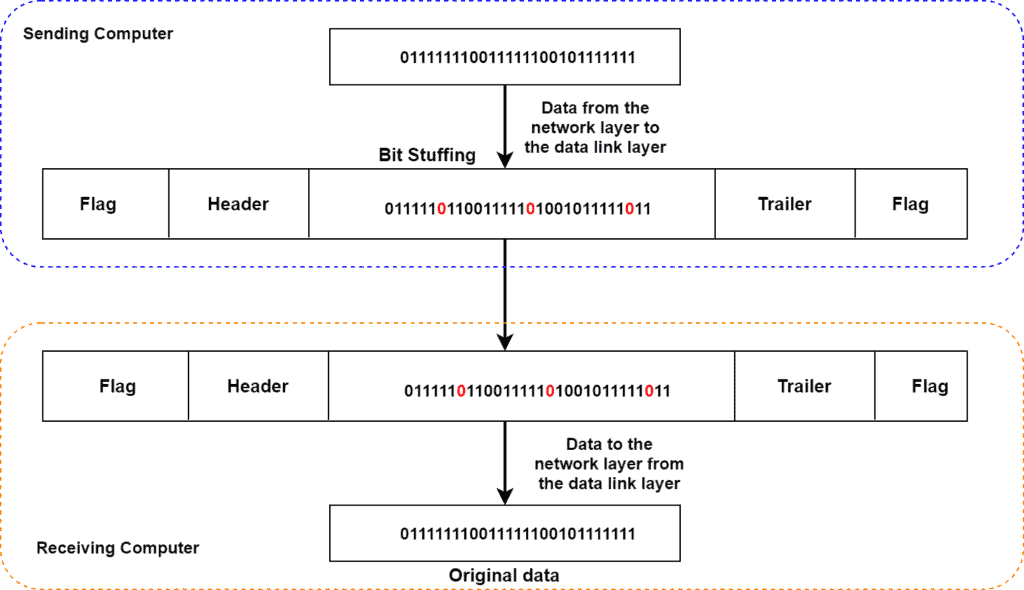1. 概述
本文将深入讲解网络通信中的位填充(Bit Stuffing)技术,并通过实际示例帮助理解其应用场景与实现原理。✅
2. 位填充简介
位填充是一种在网络数据传输中插入非信息位以实现同步的技术。 它主要用于解决数据链路层中可变长度帧的边界识别问题。
在 OSI 模型中,数据链路层负责将物理层传输的数据划分为数据帧。对于可变长度帧(Variable-Length Frame)来说,帧的大小不固定,这就带来了帧起始与结束位置难以识别的问题。
因此,位填充被用来标记帧的边界,确保接收端能够正确解析数据。
3. 数据帧结构
在面向比特的协议中,数据帧由一串比特组成。 典型的数据帧通常包括以下几个部分:
- Header(头部):包含源地址、目标地址等控制信息
- Payload(有效载荷):承载实际传输的数据
- Trailer(尾部):包含用于差错检测与纠正的校验码(如 CRC)
- Flag(标志位):用于标识帧的开始与结束,通常是一个特定的比特模式
如下图所示是一个典型的数据帧结构:

4. 位填充示例
位填充主要用于帧管理,特别是在可变长度帧中。 通过在数据中插入特定比特,接收端可以准确识别帧的边界。
比如我们可以定义一个规则:每当发送端在数据流中检测到连续五个 1 时,就插入一个 0 作为填充位。 接收端在收到数据后,会查找连续五个 1 后面是否有一个 0,如果有,则将其删除,恢复原始数据。
举个例子:
原始数据比特流为:
01111110 01011111 11011111 10111110
按照规则,每遇到五个连续的 1 就插入一个 0:
01111110 01011111 01101111 10101111 110
接收端识别到连续五个 1 后面的 0,将其移除,恢复原始数据。
下图展示了位填充的过程:

在这个过程中,发送方在数据链路层构建帧并插入填充位,接收方则在接收后删除填充位并恢复原始数据。
5. 优缺点分析
✅ 优点:
- 有助于同步多个信道的数据流,尤其在多路复用前非常有用
- 适用于运行长度限制编码(RLL 编码)
- 避免数据中出现与标志位相同的比特序列,防止误判帧边界
❌ 缺点:
- 填充位数量不可预测,完全取决于数据内容
- 增加了传输开销,影响传输效率
6. 总结
本文详细介绍了位填充技术的原理、实现方式以及实际应用。我们通过一个具体示例说明了位填充如何帮助接收端正确识别帧的边界,并讨论了其优缺点。
掌握位填充机制对于理解数据链路层的帧同步机制至关重要,尤其在网络协议开发和底层通信协议调试中非常实用。如果你在开发通信协议或进行数据帧解析时遇到帧边界识别问题,位填充是一个值得考虑的解决方案。✅